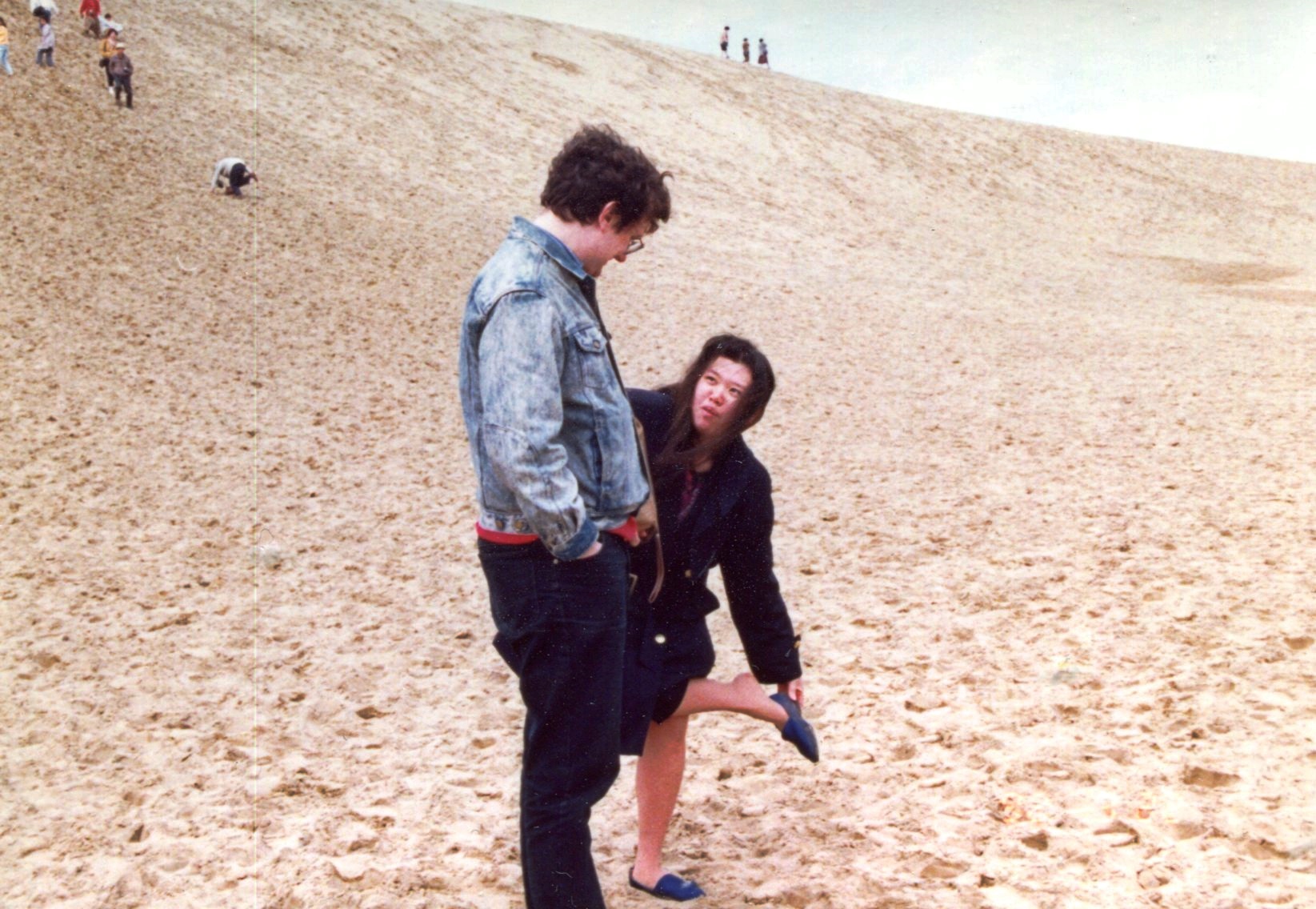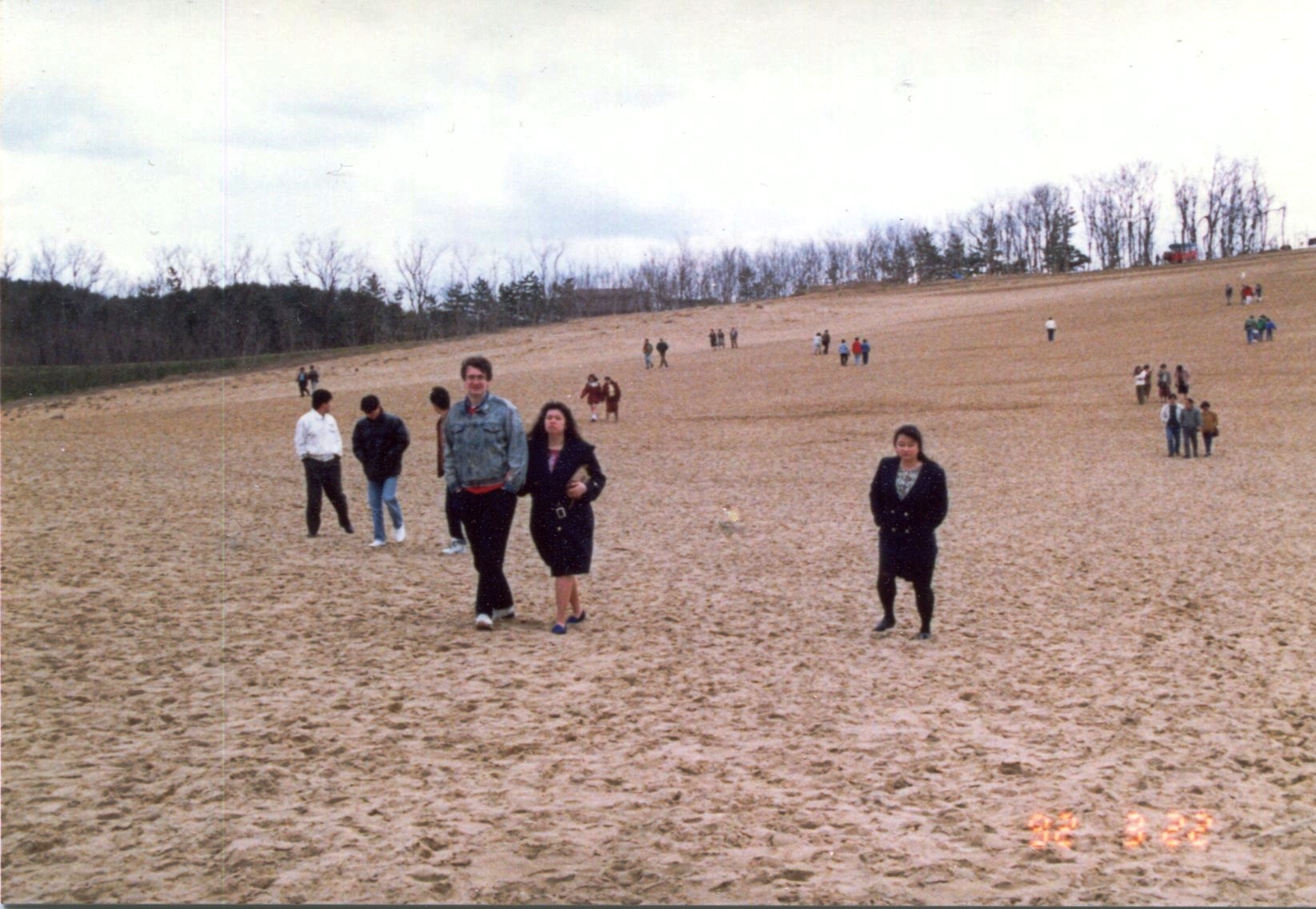Pleasant spring-ish weekend. Sour old man winter will return again sometime soon, of course, but probably not in full force as spring slowly gains the upper hand.
Referring to the Tottori Sand Dunes, Wikipedia has this to say, among other things: “Each year, around two million visitors — mostly from within Japan and East Asia — visit the dunes.[citation needed]”
Maybe so. When we went there in March 1992, the place was pretty popular.


The dunes aren’t that far from the heavily populated Kansai region — Osaka-Kyoto-Kobe — and they count as a novelty draw since Japan doesn’t a lot in the way of epic sand dunes. If that’s what you want to see, Tottori is the place to go. The dunes stretch nine miles from east to west, and are a little more than a mile wide. At their highest, they rise about 165 feet over the Sea of Japan.
“The Sendai River carries sediment from the nearby Chugoku Mountains that eventually washes out into the Sea of Japan,” JNTO says, along with images of the area wider than anything I have. “Strong sea currents and winds work together to push these sediments back onto the shore to form the sand dunes. These same intense winds continuously move and re-shape the dunes.”
The dunes supposedly inspired Kobo Abe’s novel, The Woman in the Dunes (砂の女 Suna no Onna, “Sand Woman”), which I haven’t read. Years ago I did see the 1964 movie based on the novel, which is a well known avant-garde film and, I thought, relentlessly grim. Fitting for a retelling of the Sisyphus myth.